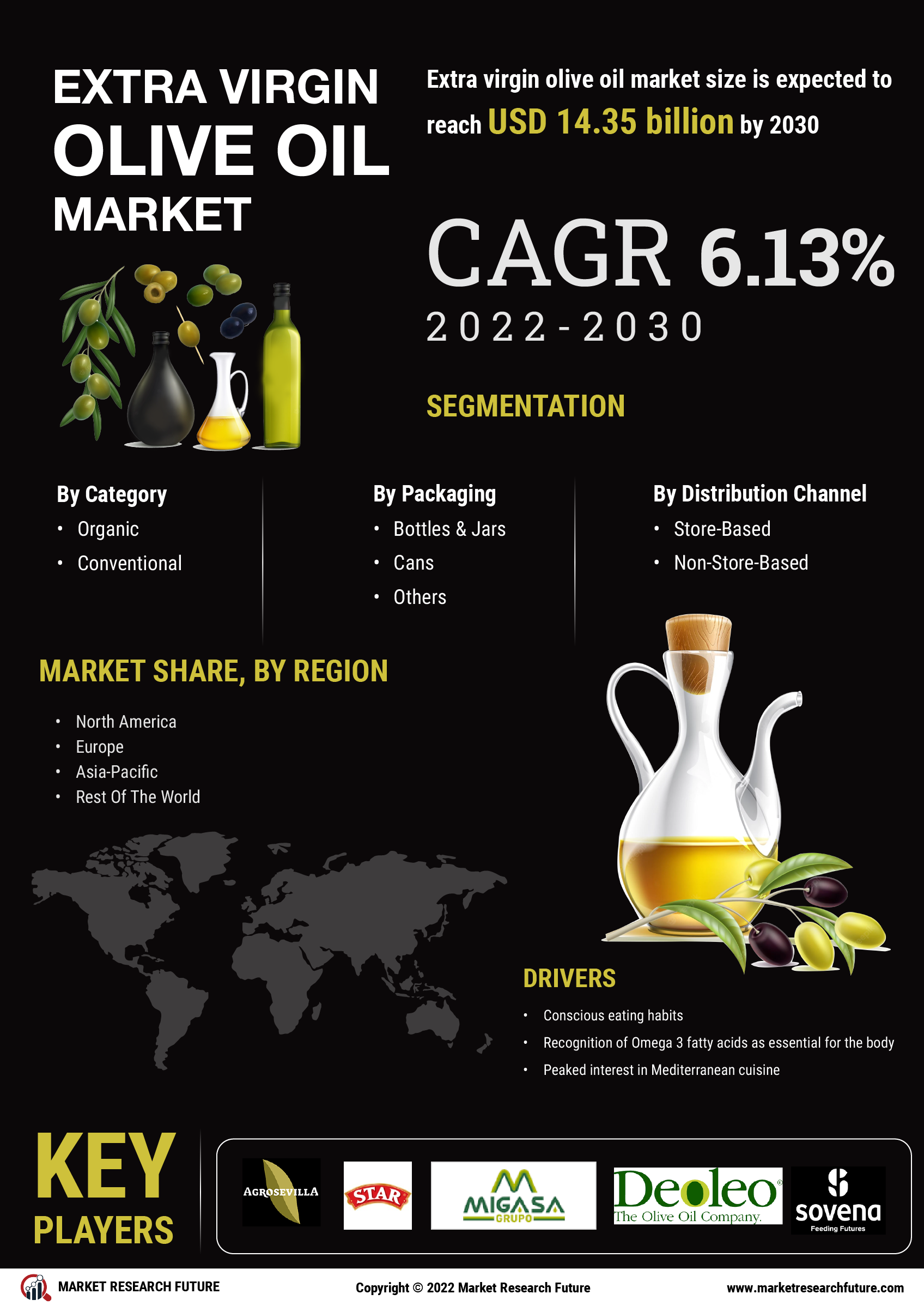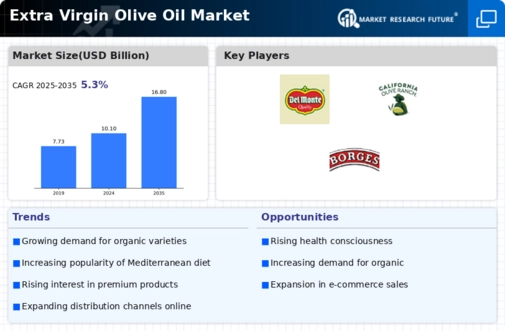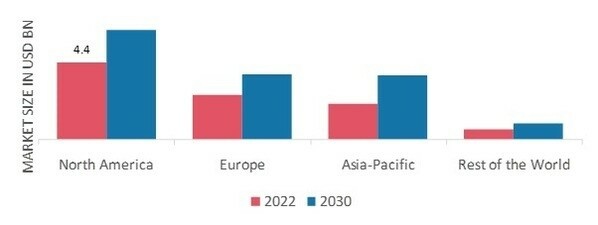Growing Culinary Trends
Culinary trends play a pivotal role in shaping the Global Extra Virgin Olive Oil Market Industry. The rise of gourmet cooking and the increasing popularity of Mediterranean cuisine have led to a heightened demand for high-quality extra virgin olive oil. Chefs and home cooks alike are increasingly incorporating this versatile ingredient into their dishes, enhancing flavors and promoting healthier cooking methods. As a result, the market is expected to witness substantial growth, with projections indicating a value of 16.8 USD Billion by 2035. This trend not only reflects changing consumer preferences but also underscores the importance of olive oil in contemporary culinary practices.
Market Growth Projections
The Global Extra Virgin Olive Oil Market Industry is projected to experience robust growth over the coming years. With a market value anticipated to reach 10.1 USD Billion in 2024 and further expand to 16.8 USD Billion by 2035, the industry is poised for a compound annual growth rate of 4.77% from 2025 to 2035. This growth is indicative of evolving consumer preferences, increased health awareness, and the rising popularity of Mediterranean diets. As the market continues to develop, various factors such as sustainability, culinary trends, and distribution channel expansion will likely play pivotal roles in shaping its future.
Rising Health Consciousness
The Global Extra Virgin Olive Oil Market Industry is experiencing a surge in demand driven by increasing health consciousness among consumers. As individuals become more aware of the health benefits associated with olive oil, such as its high antioxidant content and heart-healthy fats, the market is projected to reach 10.1 USD Billion in 2024. This trend is particularly evident in regions where Mediterranean diets are gaining popularity, leading to a broader acceptance of olive oil as a staple in cooking and food preparation. The emphasis on natural and organic products further enhances the appeal of extra virgin olive oil, positioning it as a preferred choice for health-oriented consumers.
Consumer Education and Awareness
Consumer education and awareness initiatives are playing an essential role in the Global Extra Virgin Olive Oil Market Industry. As consumers become more informed about the differences between various types of olive oil, including extra virgin, the demand for high-quality products is increasing. Educational campaigns that highlight the health benefits and culinary uses of extra virgin olive oil are fostering a more discerning consumer base. This heightened awareness is likely to contribute to the market's growth trajectory, with expectations of reaching 16.8 USD Billion by 2035. As consumers prioritize quality over price, the market is expected to witness a shift towards premium offerings.
Expansion of Distribution Channels
The expansion of distribution channels is a crucial driver for the Global Extra Virgin Olive Oil Market Industry. With the rise of e-commerce and online grocery shopping, consumers have greater access to a variety of olive oil products. Retailers are increasingly offering premium extra virgin olive oil brands, enhancing visibility and availability. This trend is particularly significant in emerging markets, where traditional distribution methods are evolving. As a result, the market is poised for growth, with projections indicating a value of 10.1 USD Billion in 2024. The diversification of distribution channels not only facilitates consumer access but also encourages brand competition and innovation.
Sustainability and Organic Farming
Sustainability initiatives and the shift towards organic farming are significantly influencing the Global Extra Virgin Olive Oil Market Industry. Consumers are increasingly seeking products that align with their values, particularly those that emphasize environmentally friendly practices. The demand for organic extra virgin olive oil is on the rise, as it is perceived as a healthier and more sustainable option. This trend is likely to contribute to a compound annual growth rate of 4.77% from 2025 to 2035. As producers adopt sustainable farming methods and certifications, the market is expected to expand, catering to the preferences of eco-conscious consumers.





